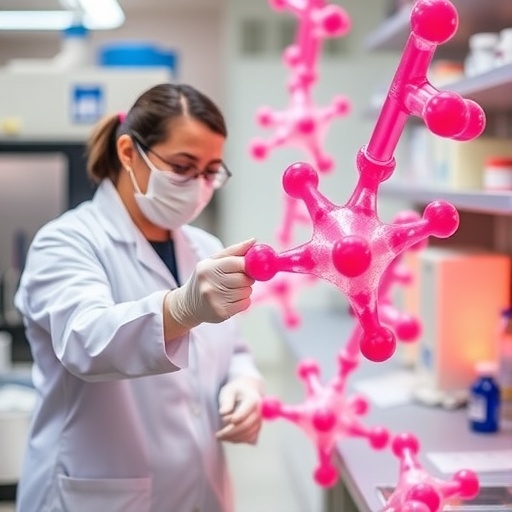PHILADELPHIA — (April 24, 2017) — The RNA editing protein ADAR1 was first discovered several decades ago. Now, scientists at The Wistar Institute have identified a new function for the protein: It stops cells that have been exposed to stressors such as ultraviolet (UV) radiation from dying. Study results were published recently in Nature Structural & Molecular Biology.
There are two forms of the ADAR1 protein, ADAR1p110 and ADAR1p150. Several biological functions for ADAR1p150 have been revealed, but little is known about the role of ADAR1p110 in vivo. The new research shows that ADAR1p110 regulates the response of cells to certain stressors, including UV radiation, by protecting them from dying as a result of a process called apoptosis, a form of programmed cell death.
"Before we started this work, we knew very little about the function of ADAR1p110 in vivo," said Kazuko Nishikura, Ph.D., professor in the Gene Expression and Regulation Program at The Wistar Institute and senior author of the study. "We knew that it could edit RNA, a polymeric molecule key for decoding the genetic material in a cell, but we did not know if this was important for its biological function."
"We were surprised to find that ADAR1p110 has an important biological role as a stress-response protein, and that this function is independent of its ability to edit RNA," she added.
To identify the functions of ADAR1p110, Nishikura and colleagues reasoned that the cellular location of the protein must be linked to its function. They found that when cells were exposed to stressors such as UV radiation, ADAR1p110 transiently moved from its normal location in the nucleoplasm and nucleoli of a cell into the cytoplasm.
The researchers then characterized the pathway controlling this change in cellular distribution, finding that it involved a protein called MAP kinase p38, which was already known to have a role in regulating death or survival of stressed cells.
Once in the cytoplasm, Nishikura and colleagues showed that ADAR1p110 protects a defined set of mRNAs from degradation. Many of these mRNAs decode genes involved in preventing apoptotic cell death, leading the researchers to conclude that ADAR1p110 protects cells from stress-induced apoptosis by protecting anti-apoptotic mRNAs from degradation.
"Now that we have a well-defined function for ADAR1p110, we can work to understand its role in postnatal development and disease, in a particular cancer," added Nishikura.
###
This work was supported by National Institutes of Health grants R01GM040536 and R01CA175058; the Macula Vision Research Foundation; and Japan Society for the Promotion of Science grants S13204 and JSPS 2010-22. Core support for The Wistar Institute was provided by the Cancer Center Support Grant P30CA010815. Co-authors of this study from The Wistar Institute are: Massayuki Sakurai, Yusuke Shiromoto, Hiromitsu Ota, Chunzi Song, Andrew V. Kossenkov, Jayamanna Wickramasinghe, Louise C. Showe, Emmanuel Skordalakes, Hsin-Yao Tang, and David W. Speicher.
The Wistar Institute is an international leader in biomedical research with special expertise in cancer research and vaccine development. Founded in 1892 as the first independent nonprofit biomedical research institute in the country, Wistar has held the prestigious Cancer Center designation from the National Cancer Institute since 1972. The Institute works actively to ensure that research advances move from the laboratory to the clinic as quickly as possible. wistar.org.
Media Contact
Darien Sutton
[email protected]
215-870-2048
@TheWistar
############
Story Source: Materials provided by Scienmag




